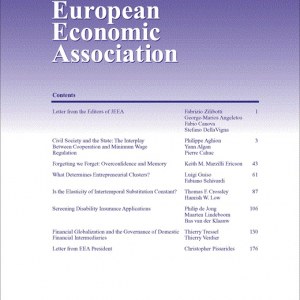
van der Ploeg, F. and de Zeeuw, A. (2018). Climate Tipping and Economic Growth: Precautionary Capital and the Price of Carbon Journal of the European Economic Association, 16(5):1577–1617.
-
Affiliated author
-
Publication year2018
-
JournalJournal of the European Economic Association
The optimal reaction to a climate tipping point that becomes more imminent with global warming is to be precautionary in adjusting capital to prepare for the calamity and to price carbon to make catastrophic change less imminent. The saving response can be positive or negative. If the mean lag for the impact of the catastrophe is long enough, the saving response will be negative, because the precautionary return in the Keynes–Ramsey rule becomes negative. We also show the separate effects of the elasticity of intertemporal substitution (EIS) and the relative risk aversion (RRA) using Duffie–Epstein preferences. Focusing on a productivity catastrophe, we calibrate our model and show how sensitive the policy responses are to the degrees of EIS and RRA, the trend rate of economic growth, the hazard rate, and how long it takes for the catastrophe to have its full impact.